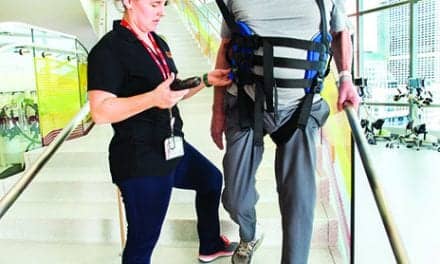Electrical stimulation of the brain—a treatment in which a pacemaker-like device sends pulses to electrodes implanted in the brain—is riskier than drug therapy but may hold significant benefits for those with Parkinson’s disease who no longer respond well to medication alone.
That is the conclusion of researchers from the Department of Veterans Affairs (VA) and National Institutes of Health (NIH) who conducted a 6-year study comparing deep-brain stimulation (DBS) to medication, along with speech, physical, or occupational therapy, given as needed. The results of the trial, the largest of its kind to date, appear in the January 7 Journal of the American Medical Association (JAMA).
"Deep-brain stimulation offers hope for a large number of patients with advanced Parkinson’s disease who suffer from complications of long-standing medication therapy," said Secretary of Veterans Affairs James B. Peake, MD. "This finding could mean improved quality of life for some of our patients."
The study included 255 Parkinson’s patients at seven VA medical centers and six university hospitals. The VA sites were Portland, Ore, Seattle, San Francisco, Los Angeles, Houston, Richmond, Va, and Philadelphia, all members of the VA’s network of Parkinson’s Disease Research, Education and Clinical Centers.
The JAMA article also noted the VA’s nationwide system of hospitals and specialized centers of excellence make the Department uniquely capable of conducting such large, multi-site trials of new therapies and medical devices. The VA’s patient population is especially suited for trials of treatments for chronic disease in the elderly.
Patients who took part in the study were on medication but are no longer seeing improvements in symptoms such as tremors or stiffness. Many were also developing side effects from the drugs, such as involuntary face, arm, or leg movements.
Researchers followed the patients for 6 months, finding:
- Patients who received DBS gained an average of 4.6 hours per day of good motor control and few or no involuntary movements, compared with no gain for those on medical therapy alone;
- 71% of DBS patients showed significant gains in motor function, compared with only 32% of drug therapy patients; and
- Serious adverse side effects were nearly four times more common in the DBS group, but almost all of these effects in both groups were resolved during the 6-month study. The most common side effects from DBS were infections, falls, depression, gait and balance problems, and pain.
Beside the higher likelihood of serious side effects with DBS compared with drug therapy, another drawback of the procedure is that, although it generally improves movement, it does little to help other Parkinson’s symptoms such as depression, decline in mental ability, gait and balance problems, and trouble with gastrointestinal, urinary, or sexual function, the researchers found.
"The results of the study should not be over- or under-stated," said Michael Kussman, MD, the VA’s Under Secretary for Health. "Still, there are many good candidates for DBS among patients with Parkinson’s disease whom we treat in VA."
The trial was sponsored by the VA’s Cooperative Studies Program and the National Institute of Neurological Disorders and Stroke, part of the National Institutes of Health. Additional support came from Medtronic, which makes the DBS system used in the study.
Parkinson’s disease affects some 1.5 million Americans, with 50,000 new cases diagnosed annually. The VA treats at least 40,000 veterans with the disorder each year. Most patients are over age 50, but some forms of the disease can strike younger adults.
Source: US Department of Veterans Affairs
[Source: Medical News Today]




